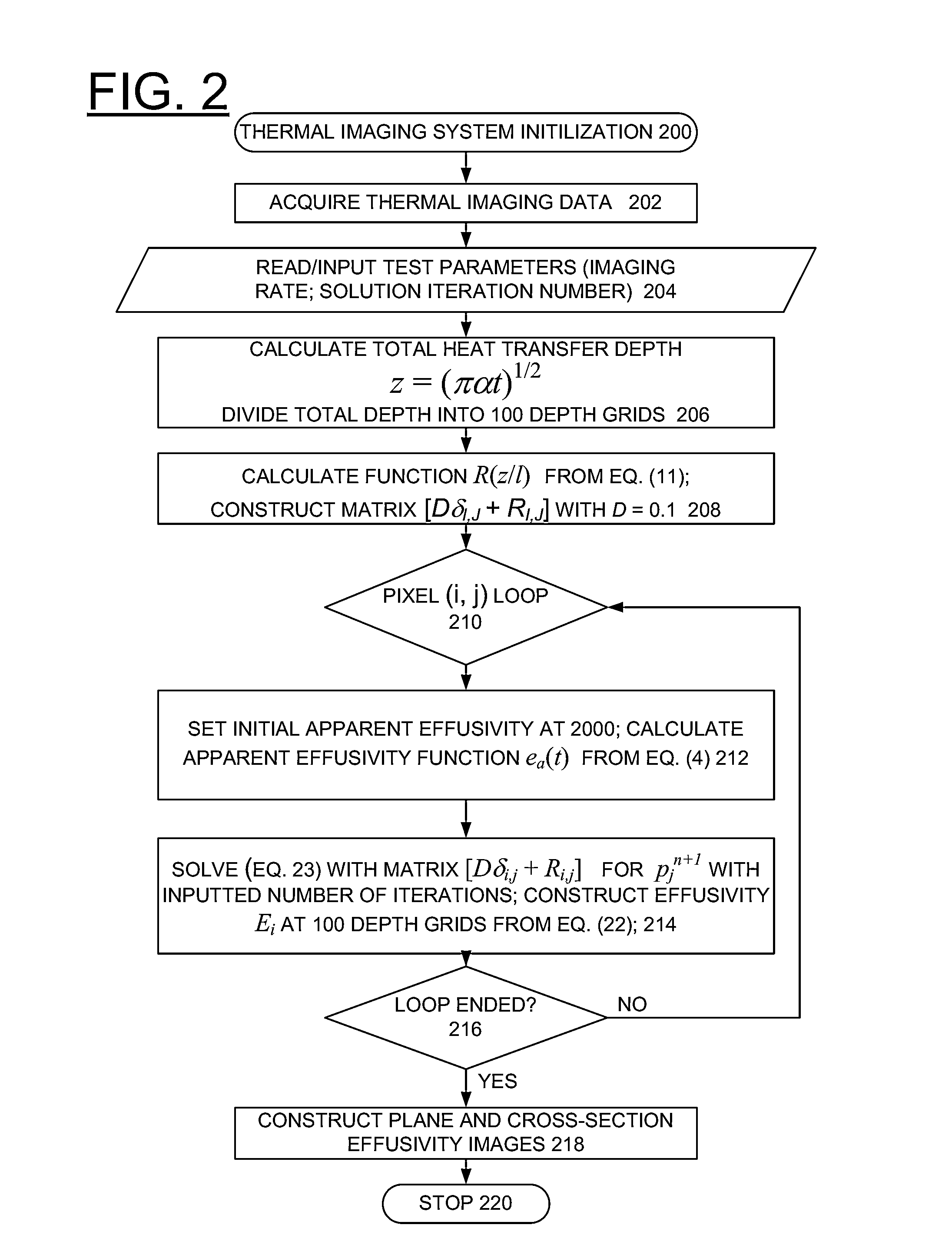Method for implementing depth deconvolution algorithm for enhanced thermal tomography 3D imaging
a 3d imaging and depth deconvolution technology, applied in the direction of three-dimensional object recognition, material analysis, instruments, etc., can solve the problems of linear resolution degradation, thermal tomography method cannot obtain high-resolution imaging, and spatial resolution degradation along the depth, so as to eliminate the degradation of depth resolution and sensitivity for internal sample features
- Summary
- Abstract
- Description
- Claims
- Application Information
AI Technical Summary
Benefits of technology
Problems solved by technology
Method used
Image
Examples
Embodiment Construction
[0035]In accordance with features of the invention, the new depth deconvolution algorithm provides a new mathematical formulation and solution procedure for thermal tomography that can substantially eliminate the degradation of spatial resolution with depth. The new algorithm is developed based upon convolution theory. It is verified to reproduce the exact deconvolution solution substantially without any degradation in depth resolution. It is also validated to obtained superior experimental data than those by the known method, such as disclosed by the above-identified U.S. Pat. No. 7,365,330. This new algorithm may therefore further establish thermal tomography as an advanced method for high-resolution 3D imaging in many scientific, medical, and engineering applications.
[0036]The method of the invention includes (1) the derivation of a response function, (2) construction of a convolution formulation, and (3) implementation of a deconvolution solution procedure. The response function...
PUM
| Property | Measurement | Unit |
|---|---|---|
| thickness | aaaaa | aaaaa |
| thickness | aaaaa | aaaaa |
| thickness | aaaaa | aaaaa |
Abstract
Description
Claims
Application Information
 Login to View More
Login to View More - R&D
- Intellectual Property
- Life Sciences
- Materials
- Tech Scout
- Unparalleled Data Quality
- Higher Quality Content
- 60% Fewer Hallucinations
Browse by: Latest US Patents, China's latest patents, Technical Efficacy Thesaurus, Application Domain, Technology Topic, Popular Technical Reports.
© 2025 PatSnap. All rights reserved.Legal|Privacy policy|Modern Slavery Act Transparency Statement|Sitemap|About US| Contact US: help@patsnap.com



